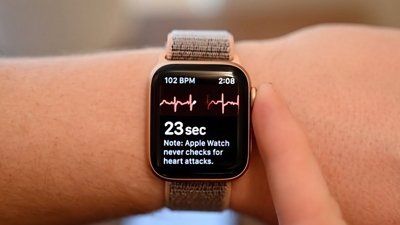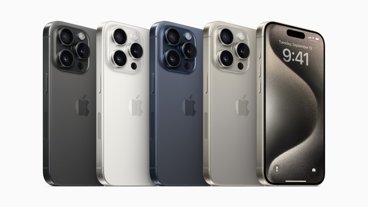X-ray of Apple's iPhone 7 Lightning headphone adapter finds mystery circuit, likely for DAC
Apple's new Lightning to 3.5-millimeter headphone adapter — bundled with every new iPhone 7 and iPhone 7 Plus, and also sold separately for $9 — features a unique integrated circuit, the purpose of which cannot be verified, but has likely been deduced.
Partnering with Creative Electron, the repair experts at iFixit took an X-ray view of Apple's new cable, finding a surprising amount of circuitry inside of Apple's diminutive adapter. In particular, the Lightning connector is accompanied by a "mystery" integrated circuit identified only by an Apple part number: "338S00140 A0SM1624 TW."
While the exact purpose of the IC remains unknown, iFixit surmises that it's likely a digital-to-analog converter (DAC) accompanied by an an amplifier and an analog-to-digital converter (ADC). Those are necessary to convert digital audio from the Lightning jack to analog sound that can be heard by human ears — Â and also to convert input sources, such as sound through the EarPods microphone, into digital audio that the iPhone can use.
In previous iPhone models, the DAC and ADC were found inside of the handset, converted via the integrated 3.5-millimeter headphone jack. But starting with this year's iPhone 7 series, Apple has officially ditched the headphone jack in favor of Lightning- and Bluetooth-connected audio, though the company has bundled its new Lightning to headphone adapter with every new iPhone 7 sold.
Notably, the iPhone 7 and iPhone 7 Plus still include a separate DAC and ADC circuit inside, because it is necessary to convert audio for the device's own onboard stereo speakers and microphone inputs.
Apple views its Lightning to headphone adapter as largely a stopgap on the path to an entirely wireless future. In that direction, the company also introduced its own W1 wireless audio chip, which aims to simplify the process of pairing Bluetooth accessories.
The W1 chip is one of the defining features of Apple's upcoming AirPods wireless earbuds, as well as a trio of upcoming Beats-branded headphones. A real-world test with the new W1-equipped Beats Solo 3 found that Apple's proprietary technology has improved battery life and range, in addition to making it easier to pair and use with multiple devices.
 Neil Hughes
Neil Hughes












 Malcolm Owen
Malcolm Owen
 William Gallagher
William Gallagher
 Christine McKee
Christine McKee
 Michael Stroup
Michael Stroup
 William Gallagher and Mike Wuerthele
William Gallagher and Mike Wuerthele


 Chip Loder
Chip Loder






